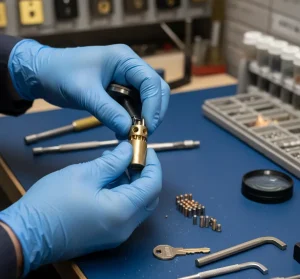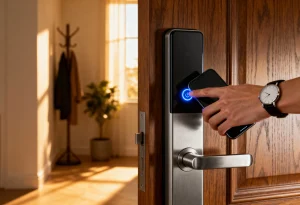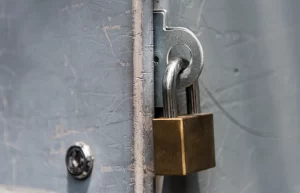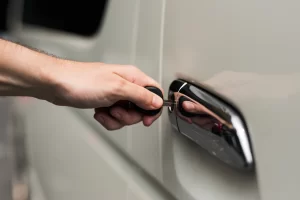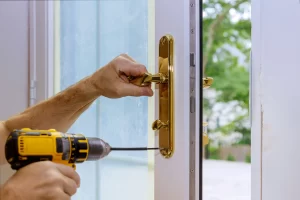
Temporary construction keying involves securing the construction site for the builder’s convenience during construction, and for the owner’s convenience upon project completion. The practice of temporary construction keying is utilized to prevent theft of the contractor’s or owner’s materials or equipment, vandalism, fire, or other damages to the building, construction site, equipment, or materials during construction.
Locking up the commercial construction area reduces liability. It is necessary for contractors to gain entry to the building during construction, but to prevent the same contractor’s entry after the building is occupied, or handed over.
Temporary construction keying may be performed by any of several methods:
1. Construction (refurbishment) keying provides a convenient and inexpensive way of converting lock barrels into a new key to access the building. Locks are keyed alike for the builder / contractor as well as for the owner(s). When construction is completed, the construction cylinders are removed and final cylinders installed by a locksmith. The builder’s key ceases to be useful to gain access after the construction cores are changed to the new, desired keying system. There are advantages of using this method:
• It simplifies the handover process;
• It costs less because there is no need to replace keying and keys at the handover stage.
• It provides additional security during all stages of construction and post-construction handover and occupancy.
2. Another method involves locks to be pinned up in such a manner as to allow the construction key / builder key to be issued to the builder /contractor and subcontractors (carpenters, electricians, plumbers, etc.). The temporary construction key permits entry into a premises during construction, but will subsequently lock out all construction workers as soon as the occupant’s key is inserted after the handover / change of possession.
Some residential locks currently provide a temporary construction keying system that includes two keys: The first key issued to the builder / contractor / subcontractors operates the lock in the normal manner. The second “void key” is for the owner(s). As soon as it is inserted into the lock, the first (builder’s) key will no longer work. From that time on, the “void key” becomes the customer’s / owners’ new key to unlock that lock.
Essentially, the master key or change key allow the lock’s construction balls to travel into a particular hole when the construction key is used for the first time. The master key and change key situate the construction balls above the shear line. When the plug turns, the construction balls drop into the drilled hole. This action voids the construction key, preventing it from operating the lock. From this point on, only the master key or change key work the lock.
The advantages of using this method include:
• It provides an ideal solution when temporary access is necessary, but only for a limited time;
• The locksmith may be called in advance to set up this type of keying, and
• It is possible to change from construction keying to permanent keying as often as is necessary.

